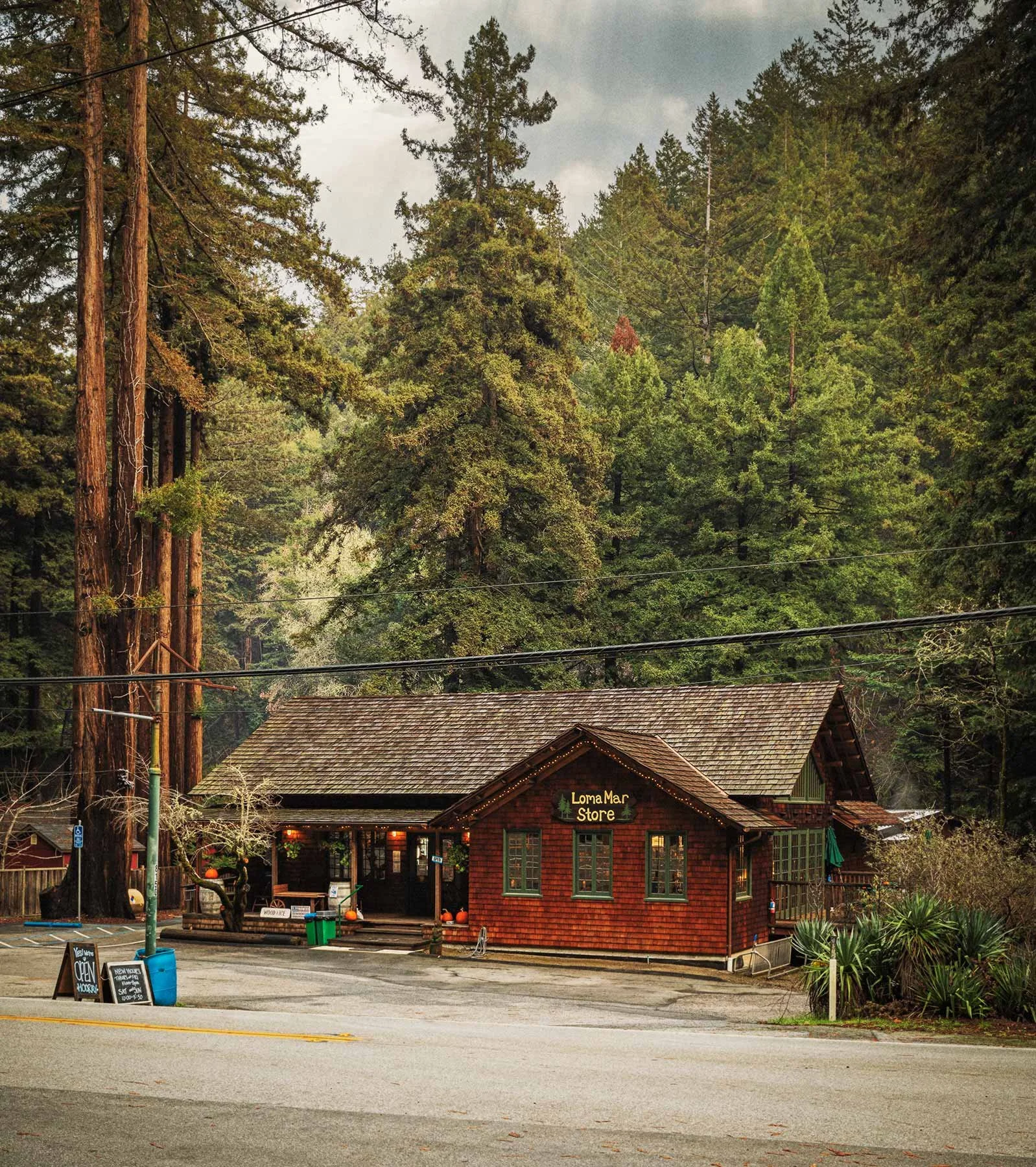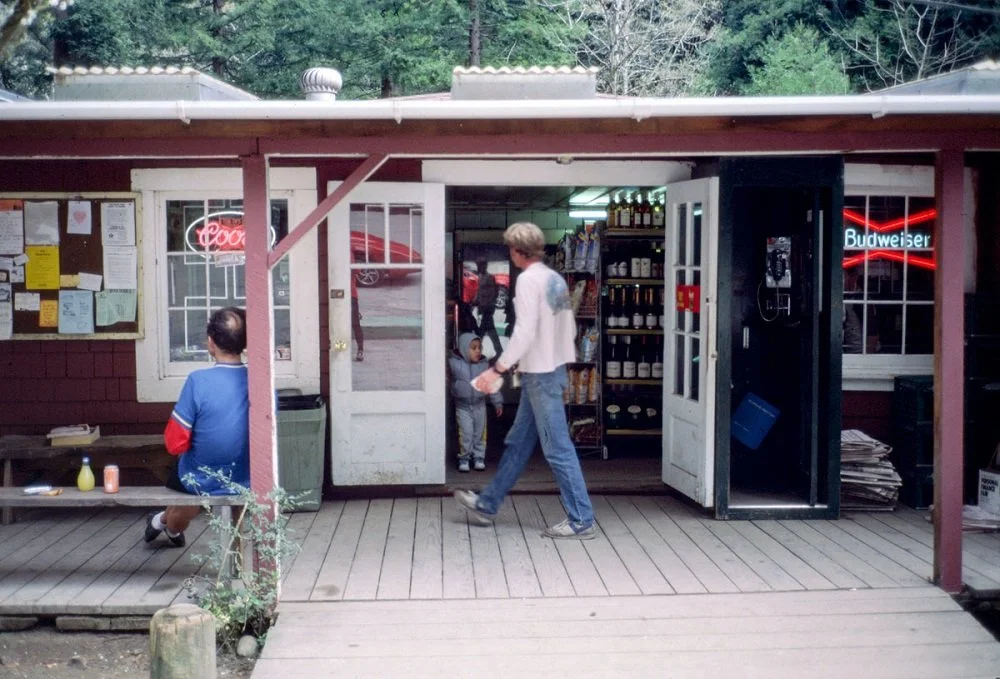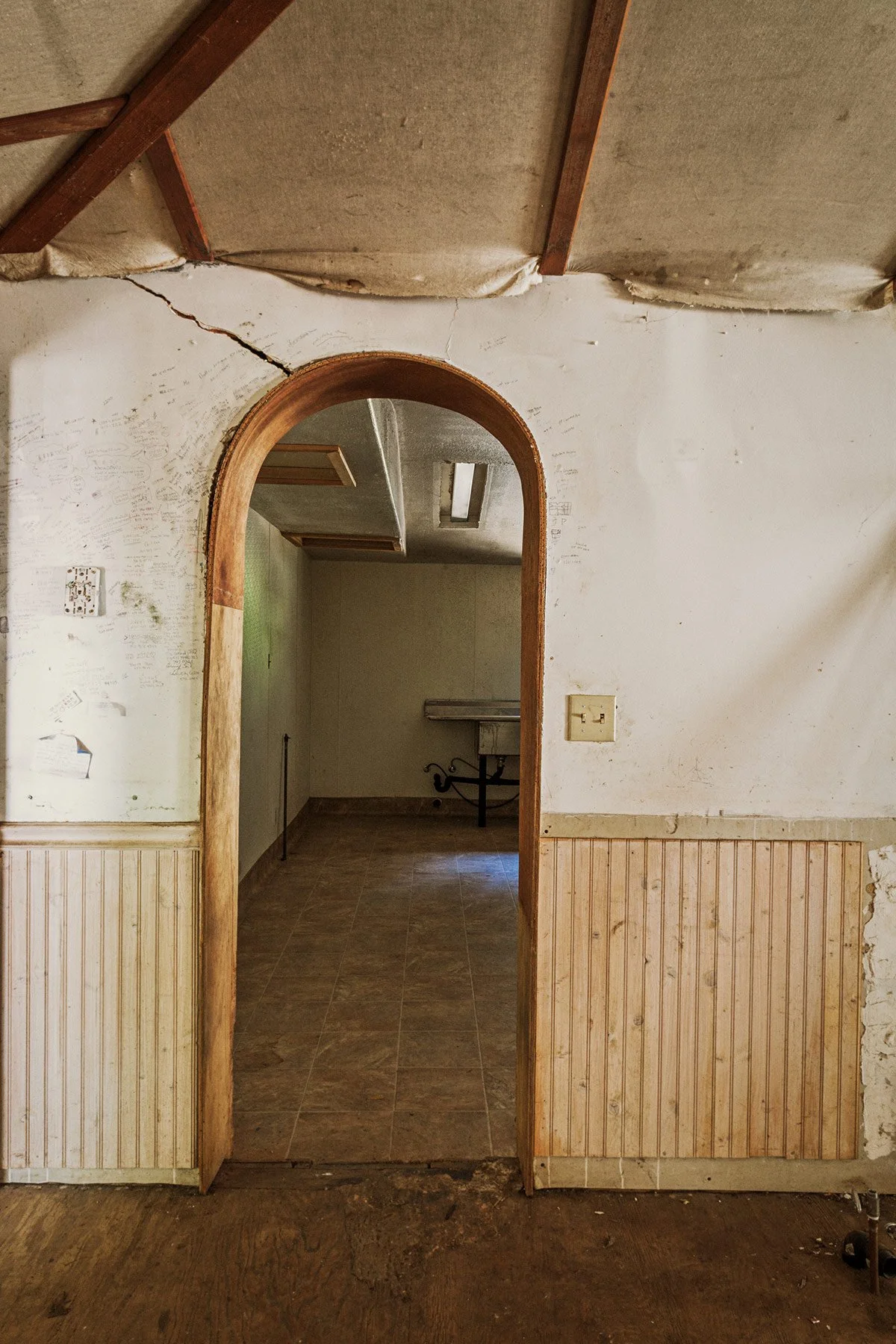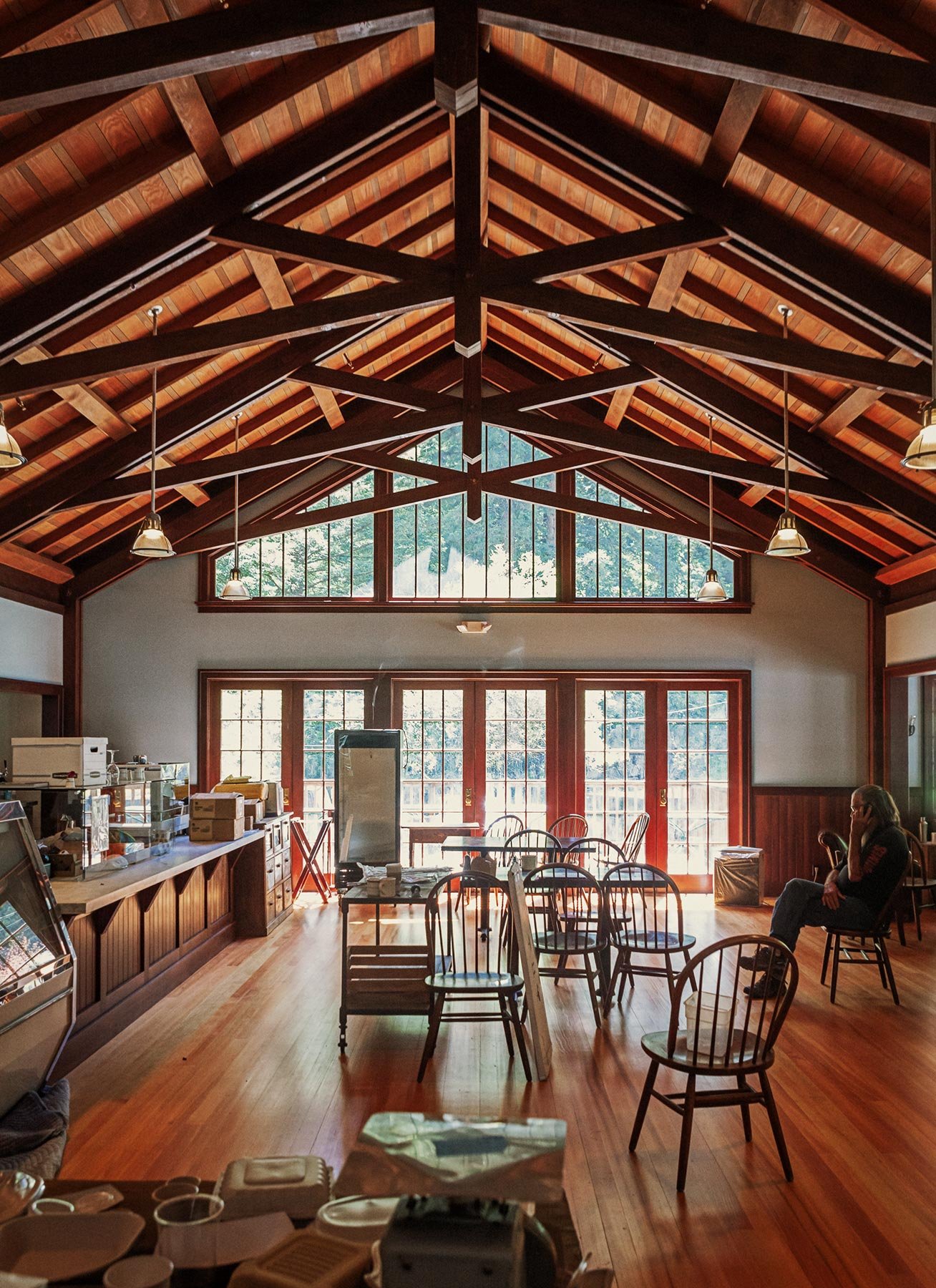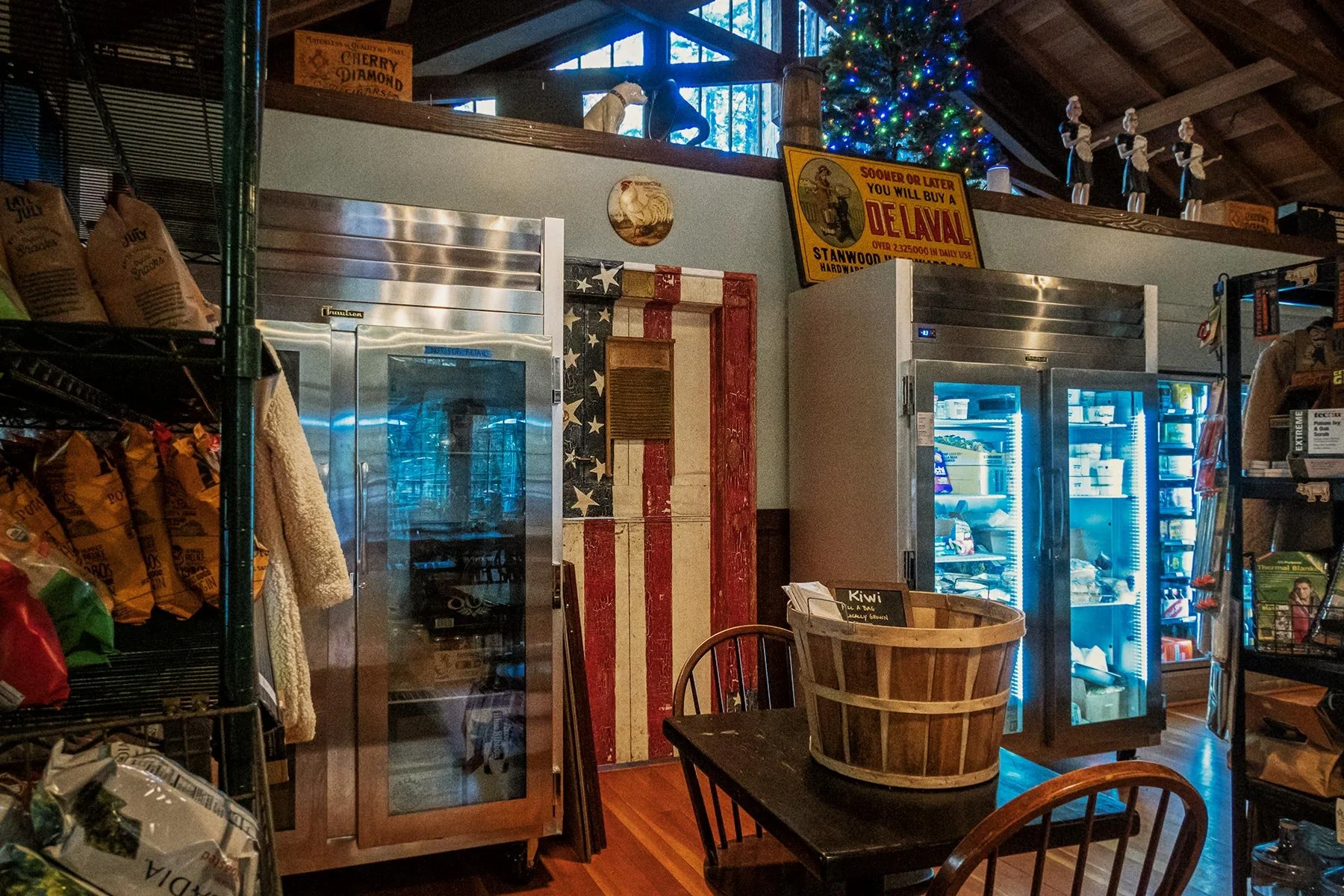
The Loma Mar Story
The story of the loma mar store
The Loma Mar Store is not only a one building village center, it’s what makes an alcove of just over 100 residents into a town, and we were honored to be asked to be a part of its lasting history.
Way back to the days of logging camps and homesteaders, it’s been the keystone of community and connection.
The history of the store goes back as far as the town. It was originally part of a logging camp in the mid-1800s, and it’s continuously been the post office since the land was settled.
As the logging camp turned into homesteads and the farms became an iconic California coastal town — Jason even lives in one of the original farmhouses — the store rotated through becoming a trading post, a bar, a store, the volunteer fire department, a really good restaurant, and back around again.
Photography: Michele Lee Willson Photography
Copy: Bemboom Design

Unfortunately, before it was purchased by the current owners, the building had fallen into disrepair, and much of it was rotten when the team first went to fix it up. There were roof leaks, and the floor was so uneven you walked uphill and downhill inside. It was still a really neat-looking structure, but it needed help.
Enter Steve, the hero of our story!
Steve* was the man on the ground, running this special project, and making the restoration of the Loma Mar Store happen.
Thank you to Jane for documenting the team working on her home in Pescadero.
*Steve was not available for comment at this time, as he is constantly on a ladder, and that is not an ideal place for an interview.
Our focus was to restore while preserving as much as we could, so the soul of the store could be experienced again.
The first thing: the whole building was lifted up in the air, so Steve and the team could add steel beams and a new foundation to preserve the structure and level it out. Then, we slowly started restructuring. We replaced the extensive rot in the exterior walls, making them plum and level.

When a large redwood had to be taken down, Jason saw an opportunity to send it up the road to be milled by his friend Chris Conner to be used as much of the replacement wood in the store. Chris used a large circular saw, so the wood has sawmarks, just like it would have been built from an onsite tree back at the logging camp.
Steve and the crew also built the roof trusses out of the redwood. Each truss was put together on the floor of the deck, and placed in with a crane when the roof was built.
Some of the additional redwood in the building and the deck is old growth, purchased from one of the old families in the area that had a cache of beautiful old redwood. It has a beautiful woodgrain, such tight woodgrain you can hardly see it.
The evolution of the store follows the history of logging in Loma Mar. Logging isn’t gone, but now it’s focused on restoration, using selective harvesting to bring the forest back, for tree health and fire safety.
“When people walk in they don’t know what’s original and what’s not.”

While there’s surprisingly fierce competition over the title of smallest post office in the United States, Loma Mar is no lightweight.
One of the elements we knew had to be preserved was the American flag door that leads to the post office.

Like with many other historical buildings, additions and alterations had been made over the years with an eye to immediate needs and utility, leading to a mismatch of rooflines and some funky floorplans.
The redesign of the building focused on creating cohesion without disrupting history. What better way to do that than finding inspiration from Julia Morgan? The architect of the redesign and the team looked to her French chalet-style cabins in the region to inform the soaring roofline windows and beams.
“Our focus was to restore while preserving as much as we could, so the soul of the store could be experienced again.”
We wanted the windows to be single pane, like in the original building, as well as many other historical buildings. They are true divided, custom-made out of redwood and fir, laminated single-paned glass.
We were just trying to be authentic, but the result is truly beautiful.
Another classic element of the store is the sign that normally hangs outfront. It was carved out of redwood slab by Chris Dutch (who also started the Pescadero Art and Fun Festival.) He hand-carved the whole sign, with a depiction of the original store with its river rock chimney, almost identical on both sides. It’s temporarily missing from the store because Jason’s mom has carefully restored it to its original glory.


